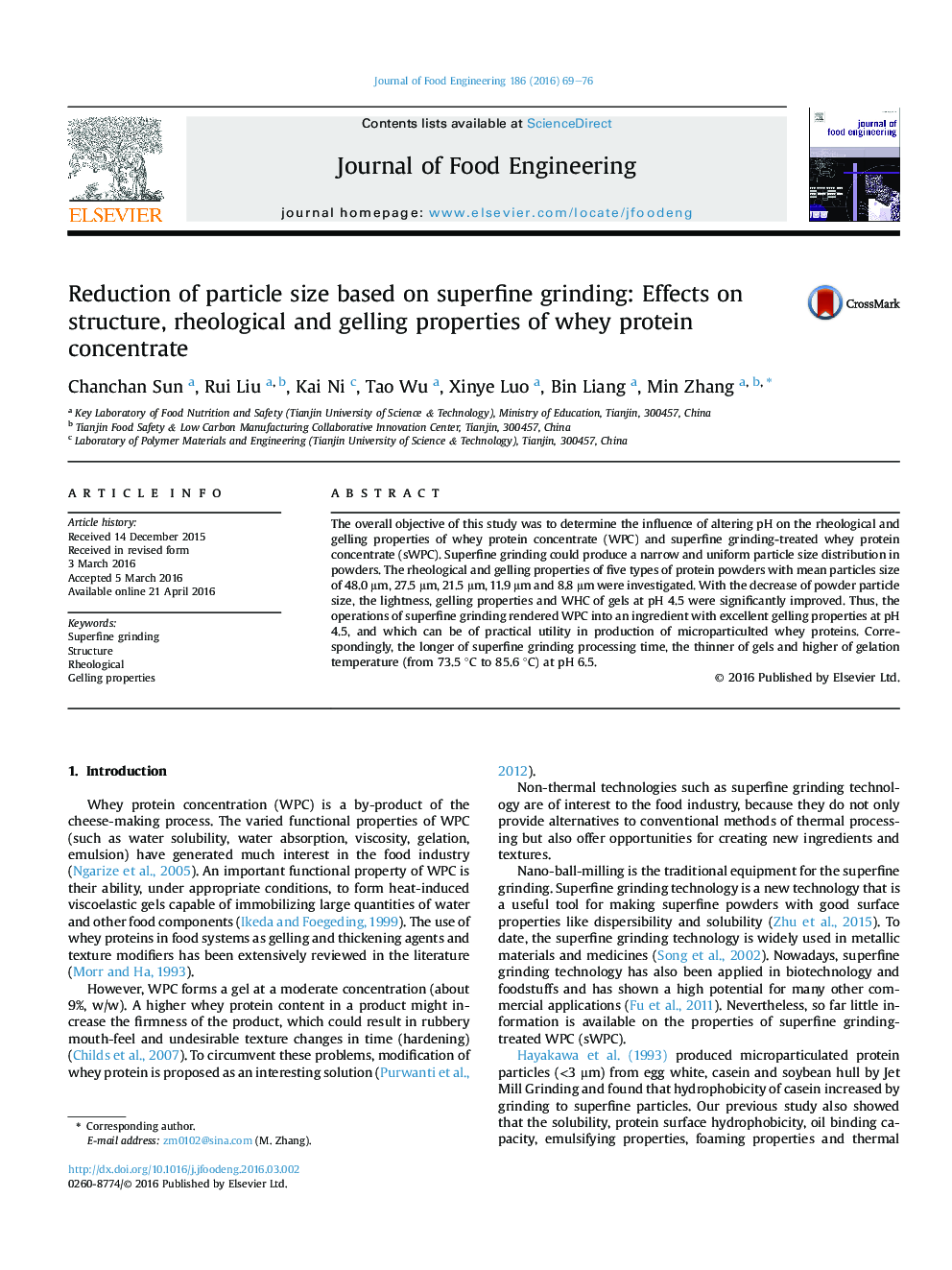| Article ID | Journal | Published Year | Pages | File Type |
|---|---|---|---|---|
| 222628 | Journal of Food Engineering | 2016 | 8 Pages |
•Superfine grinding crushes WPC to superfine powders with particle size of 8.8 μm.•Superfine grinding transforms α-helix and β-turn of WPC into β-sheet and random.•Superfine grinding leads to the increased pseudoplasticity and gelation temperature of WPC.•The lightness, gel texture and WHC of gels at pH 4.5 were enhanced after superfine grinding.
The overall objective of this study was to determine the influence of altering pH on the rheological and gelling properties of whey protein concentrate (WPC) and superfine grinding-treated whey protein concentrate (sWPC). Superfine grinding could produce a narrow and uniform particle size distribution in powders. The rheological and gelling properties of five types of protein powders with mean particles size of 48.0 μm, 27.5 μm, 21.5 μm, 11.9 μm and 8.8 μm were investigated. With the decrease of powder particle size, the lightness, gelling properties and WHC of gels at pH 4.5 were significantly improved. Thus, the operations of superfine grinding rendered WPC into an ingredient with excellent gelling properties at pH 4.5, and which can be of practical utility in production of microparticulted whey proteins. Correspondingly, the longer of superfine grinding processing time, the thinner of gels and higher of gelation temperature (from 73.5 °C to 85.6 °C) at pH 6.5.
